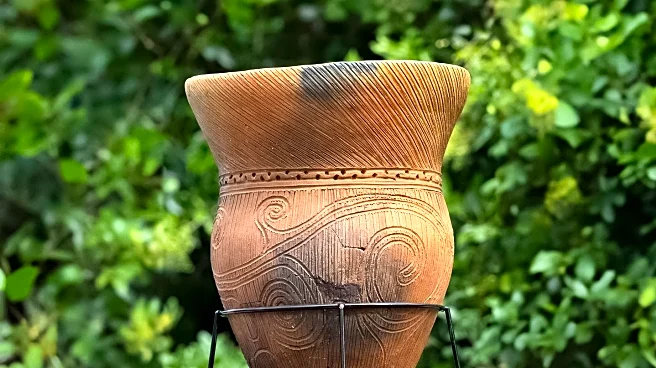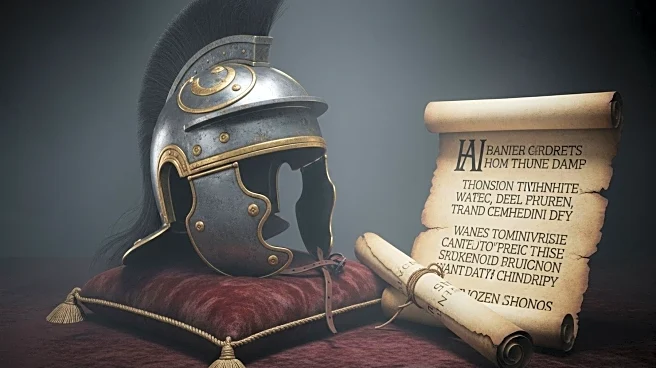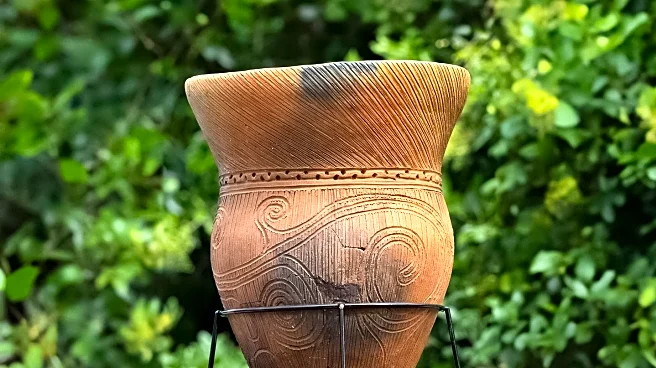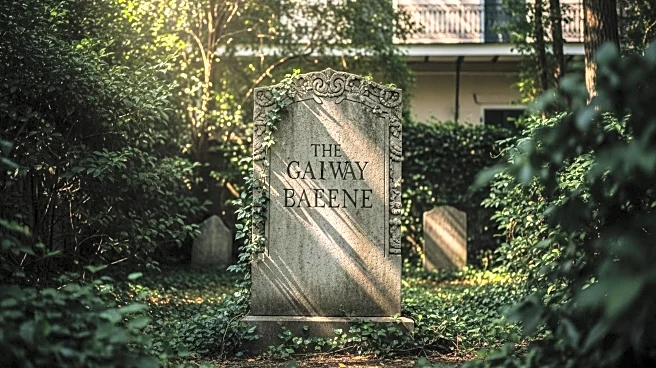What is the story about?
What's Happening?
A Roman tombstone dating back 2,000 years was discovered in the yard of a Tulane University anthropologist in New Orleans. The tombstone belonged to Sextus Congenius Verus, a sailor from the 2nd century who served on a Roman warship. The artifact was traced to the Civitavecchia museum in Italy, where it likely went missing during World War II. The tombstone was handed over to the FBI for repatriation. The discovery prompted an investigation by a team of archaeologists and classicists, who explored how the tombstone ended up in Louisiana. Despite extensive research, the team was unable to determine the exact path the artifact took to reach New Orleans.
Why It's Important?
The discovery of the Roman tombstone in New Orleans highlights the complexities of artifact repatriation and the historical significance of such finds. It underscores the importance of preserving cultural heritage and the role of institutions like the FBI in facilitating the return of artifacts to their rightful locations. The case also illustrates the potential for historical artifacts to surface unexpectedly, prompting investigations that can shed light on past events and movements. This event may encourage further scrutiny of artifacts in private collections and raise awareness about the ethical considerations surrounding the acquisition and ownership of historical items.
What's Next?
The tombstone is set to be repatriated to Italy, where it can be properly displayed and preserved. The investigation into its journey to New Orleans may continue, although the team has reached a dead end in tracing its exact path. The case may prompt further discussions on the repatriation of artifacts and the responsibilities of collectors and institutions in ensuring the ethical handling of historical items. Additionally, the story may inspire similar investigations into other artifacts with unclear provenance, potentially leading to more repatriation efforts.
Beyond the Headlines
The discovery raises questions about the ethical implications of artifact collection and the responsibilities of individuals and institutions in preserving cultural heritage. It highlights the potential for historical artifacts to be displaced during times of conflict, such as World War II, and the challenges in tracing their origins. The case also emphasizes the importance of interdisciplinary collaboration in uncovering historical narratives and the role of local communities in preserving and understanding their cultural heritage.
AI Generated Content
Do you find this article useful?














